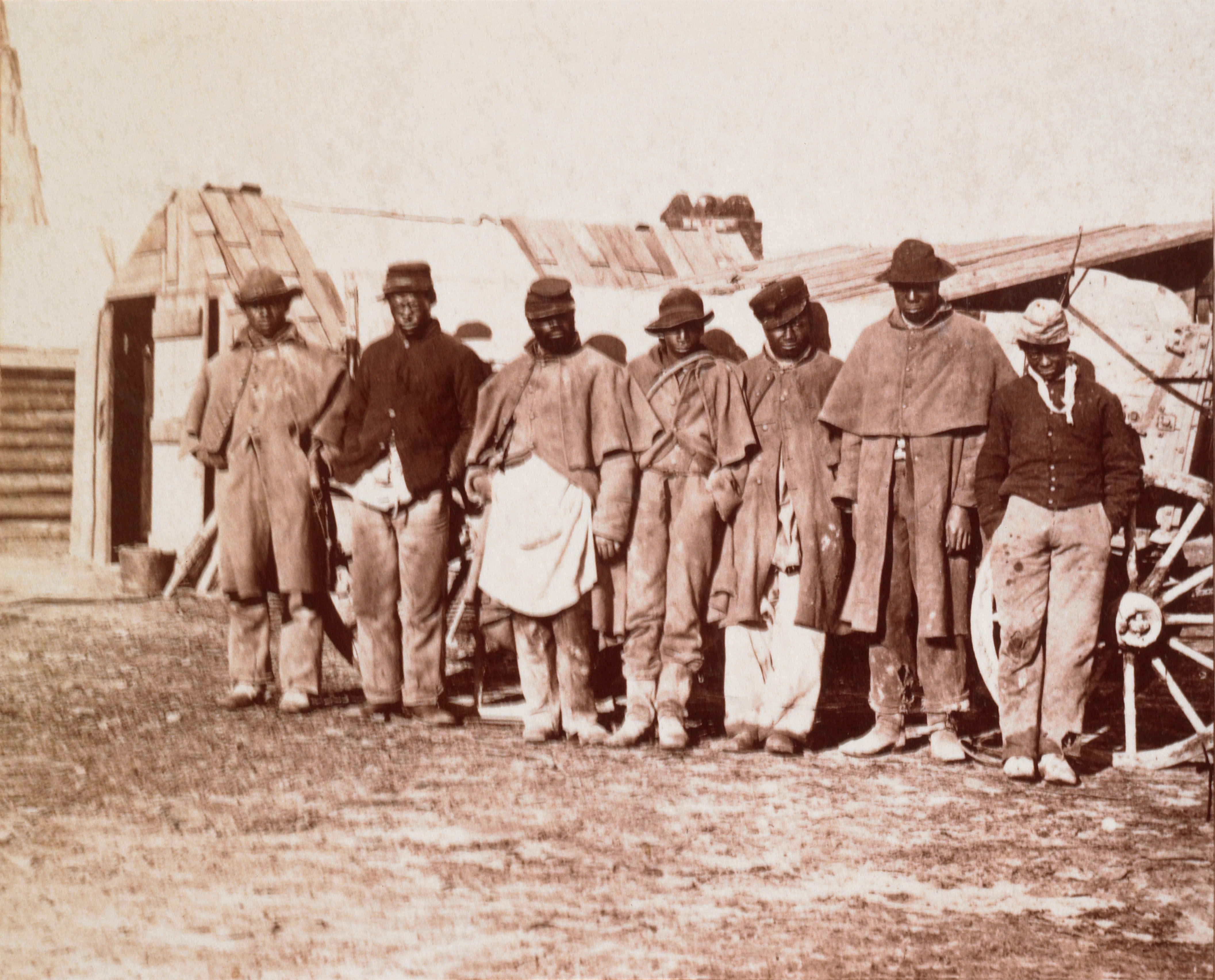How America forgot the true history of the Civil War
The Lost Cause was the most successful propaganda campaign in American history


After the clashes and white supremacist terror attack in Charlottesville, Virginia, the latest dimension of our unfolding national meltdown is over monuments to the Confederacy. In retaliation for the violence in Charlottesville, demonstrators pulled down a Confederate statue in Durham, several cities in the North quickly yanked theirs down, and several other places are considering the same thing. President Trump in turn complained about the "history and culture of our great country being ripped apart with the removal of our beautiful statues and monuments."
Confederate statues are generally not very aesthetically memorable. They are far more important for what they represent: a bill still being paid for over a century of deliberate forgetting and rewriting of the history of the Civil War and Reconstruction.
Let me start with one important fact: The American Civil War was fought over slavery. Southern states seceded (and later started the war) in furious outrage over Abraham Lincoln being elected on a platform of restricting slavery's extent to the places in which it already existed. Rather than accept the result of the democratic process, secessionists decided to break the country apart and start a war to keep it that way. Preserving and extending slavery — which was the sole foundation of the Confederacy's political economy — was the objective of this war.
The Week
Escape your echo chamber. Get the facts behind the news, plus analysis from multiple perspectives.

Sign up for The Week's Free Newsletters
From our morning news briefing to a weekly Good News Newsletter, get the best of The Week delivered directly to your inbox.
From our morning news briefing to a weekly Good News Newsletter, get the best of The Week delivered directly to your inbox.
After the war came Reconstruction. Disgruntled ex-Confederates, assisted by the deeply racist President Andrew Johnson, attempted to return their states to a condition as close to slavery as possible — in essence overturning the result of the war (in which some 200,000 black Union soldiers had constituted one key to victory) through terrorism. Enraged Radical Republicans, with the strong support of President Ulysses S. Grant after he was elected, occupied the South with federal troops and enforced protection of black suffrage. From 1867-1876, while ex-slaves did not get meaningful economic help, their voting rights were protected.
But in 1873, there was a financial crisis, which wrecked Republican political fortunes and swept Democrats into control of the House of Representatives. With Republicans' orthodox capitalist measures only worsening the problem, and the party increasing swayed by racist Liberal Republicans who advocated more-or-less abandoning the party's most loyal voting block to Dixiecrat terrorism, Republicans abandoned Reconstruction in 1877 in return for the presidency. Over the next two decades, blacks were violently disenfranchised, their labor brutally exploited, and the white supremacist Jim Crow police state reigned in the South until the 1960s.
This story of chattel slavery, tyranny, white supremacy, and terrorism made rather unappetizing ad copy — as Grant later wrote, the Confederate cause was "one of the worst for which a people ever fought, and one for which there was the least excuse." Hence, ex-Confederates and associated sympathizers began to think up alternative histories that sounded better, starting right after the war ended. The major plank of this was the "Lost Cause," which argued that the war was not actually about slavery — instead it was about "state's rights." The antebellum South was cast as a sepia-toned paradise of noble gentlemen, virtuous ladies, and happy slaves. Ulysses Grant was smeared as a drunken butcher, while Robert E. Lee was virtually deified as the picture of honor and the greatest general in American history, if not the world. Reconstruction governments were depicted as hopelessly corrupt, and black men as unfit for the franchise.
As history, this was and is absolutely preposterous. The very idea that some abstract concept of "state's rights" could motivate a war that killed nearly a fifth of the South's white male population was ludicrous on its face (as compared to defense of property which was worth more than all the industrial and transportation capital in the U.S. put together). What's more, as Edward Bonekemper writes in The Myth of the Lost Cause, Confederates were not remotely subtle about why they were seceding. Slavery was straightforwardly cited as the casus belli by most top Confederate officials, many of whom also laid down lengthy slavery apologias. Protection of slavery was written into the Confederate constitution, as well as most of the state-level versions.
A free daily email with the biggest news stories of the day – and the best features from TheWeek.com
This obvious truth was also visible in recruitment. Slaves were a major potential source of soldiers, but Southern politicians reacted with stunned outrage to proposals to give slaves their freedom in return for joining the army. Increasingly desperate proposals for this fell completely flat until the war was nearly over, and only passed in the most halfhearted and experimental form a month before Union victory. As one Confederate officer put it, arming slaves would "contravene the principles upon which we fight."
Bonekemper also convincingly argues that the cult of Robert E. Lee is similarly backwards. Indeed, he argues the South likely could have won the Civil War if Lee hadn't been such an abysmal strategist. The North did have a large advantage in manpower and resources, but unlike almost every other civil war, they also had to conquer a large, politically established country. In an age when military technology heavily favored defense, the Confederacy likely could have held on and survived if they had simply bunkered down and waited for mounting Union casualties to lead the government to give up. Instead, Lee wasted vast resources and thousands of troops he could not afford to lose by repeatedly mounting failed invasions of the North. Even his tactics were sometimes quite poor as well, as when he ordered perhaps the dumbest attack in the history of American warfare at Gettysburg. All this drained the western Confederacy of men and supplies, helping Grant to pull off the finest piece of generalship of the war in his Vicksburg campaign, and left Lee unable to defend effectively against Grant's final victorious campaign in 1864-65.
It was Grant who was the best general of the war, and Lee — who lost by far the largest proportion of his men out of any general on either side — who was the senseless butcher.
The slurs of Reconstruction were just as mendacious. Southern state governments were no more corrupt than Northern ones during this period, and blacks were if anything better than whites on this score — especially when you account for all the terrorism. The object of "Redemption" was to disenfranchise and subjugate blacks, nothing more.
But never underestimate the capacity of people to forget. Southern historians repeated the Lost Cause agitprop over and over. The fact that maintaining democracy during Reconstruction required constant use of force to fight white terrorism helped enormously in this effort. Northern voters and politicians grew tired, wondering how long they'd have to keep fighting the same battle. Viewing the conflict as a noble tragedy on both sides — and not a heroic fight against a profoundly evil tyranny — became more and more tempting. As direct memories of the Civil War faded and Union veterans started to die off, Northern whites — who were on average only somewhat less racist than Southern ones — began to internalize the Lost Cause and the associated slurs of Reconstruction.
Eventually this became the hegemonic view among most white Americans. Assisted by Hollywood blockbusters like Gone with the Wind, whites put the Civil War in the past by forgetting what it was all about and by looking past or quietly approving of Jim Crow terror. As Josh Marshall writes, "the North and the South made a tacit bargain in the years after the Civil War to valorize Southern generals as a way to salve the sting of Southern defeat and provide a cultural and political basis for uniting the country with more than military force ... what was gained it was gained at a terrible price and a price paid more or less solely by black citizens."
Nearly all the Confederate statuary was put up several decades after the Civil War to celebrate the victory of Jim Crow — and a nontrivial number during the 1960s to spit in the face of the Civil Rights Movement. They are symbols of white supremacy, each and every one of them. They exist because white Americans did not have the moral courage to preserve Southern democracy — purchased with some 750,000 lives and abandoned after only 12 years.
But because of the successful Lost Cause propaganda campaign, most people do not realize this and take Trump's side on the statue question.
If the federal government had beaten ex-Confederate terrorists into submission for as long as it took — particularly in the crucial two years after the war, when Johnson's stubborn racism allowed them to regroup and regain some initiative, we would not be having this crisis. Instead tyranny displaced democracy in the American South, white Americans swallowed a lot of comforting lies to cover up that fact, and open racism continued to thrive — only partly beaten back by the civil rights advances of the 1960s. Violent white supremacy lives today, as does political racism from conservative Southern politicians, who are to this day working feverishly to disenfranchise as many black Americans as possible, because of that moral failure.
Let us remember this the next time some conservative argues, as Supreme Court Chief Justice John Roberts did when he gutted the Voting Rights Act in 2013, that measures to protect American democracy from racist tyranny are "based on 40-year-old facts having no logical relationship to the present day." White terror today grows up the frame of a historical trellis well over 150 years old. Perhaps someday America's history of racism can truly be buried. But first, it must be killed.
Ryan Cooper is a national correspondent at TheWeek.com. His work has appeared in the Washington Monthly, The New Republic, and the Washington Post.
-
 San Francisco tackles affordability problems with free child care
San Francisco tackles affordability problems with free child careThe Explainer The free child care will be offered to thousands of families in the city
-
 How realistic is the Democratic plan to retake the Senate this year?
How realistic is the Democratic plan to retake the Senate this year?TODAY’S BIG QUESTION Schumer is growing bullish on his party’s odds in November — is it typical partisan optimism, or something more?
-
 Taxes: It’s California vs. the billionaires
Taxes: It’s California vs. the billionairesFeature Larry Page and Peter Thiel may take their wealth elsewhere
-
 The billionaires’ wealth tax: a catastrophe for California?
The billionaires’ wealth tax: a catastrophe for California?Talking Point Peter Thiel and Larry Page preparing to change state residency
-
 Bari Weiss’ ‘60 Minutes’ scandal is about more than one report
Bari Weiss’ ‘60 Minutes’ scandal is about more than one reportIN THE SPOTLIGHT By blocking an approved segment on a controversial prison holding US deportees in El Salvador, the editor-in-chief of CBS News has become the main story
-
 Has Zohran Mamdani shown the Democrats how to win again?
Has Zohran Mamdani shown the Democrats how to win again?Today’s Big Question New York City mayoral election touted as victory for left-wing populists but moderate centrist wins elsewhere present more complex path for Democratic Party
-
 Millions turn out for anti-Trump ‘No Kings’ rallies
Millions turn out for anti-Trump ‘No Kings’ ralliesSpeed Read An estimated 7 million people participated, 2 million more than at the first ‘No Kings’ protest in June
-
 Ghislaine Maxwell: angling for a Trump pardon
Ghislaine Maxwell: angling for a Trump pardonTalking Point Convicted sex trafficker's testimony could shed new light on president's links to Jeffrey Epstein
-
 The last words and final moments of 40 presidents
The last words and final moments of 40 presidentsThe Explainer Some are eloquent quotes worthy of the holders of the highest office in the nation, and others... aren't
-
 The JFK files: the truth at last?
The JFK files: the truth at last?In The Spotlight More than 64,000 previously classified documents relating the 1963 assassination of John F. Kennedy have been released by the Trump administration
-
 'Seriously, not literally': how should the world take Donald Trump?
'Seriously, not literally': how should the world take Donald Trump?Today's big question White House rhetoric and reality look likely to become increasingly blurred
